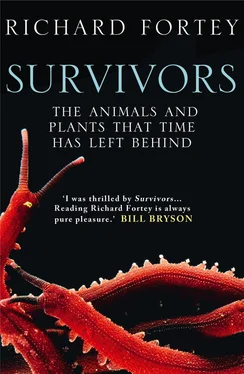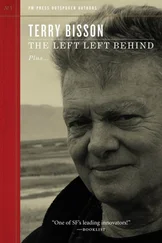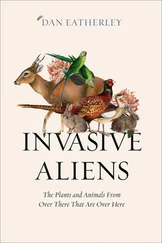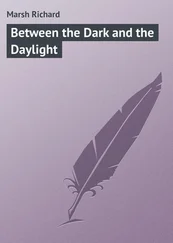Route 1, running up the west coast of Western Australia towards Shark Bay, seems never to end. The Greyhound bus runs onwards through the dark, with nothing really distinguishing the passage of miles except sporadically a startled kangaroo picked out in the headlights. Occasional vehicles pass the other way, and each one seems something of a surprise. What can they be doing out here? I have to remind myself yet again that I am en route to see one of the holy relics in geology; it will be worth the effort. After countless hours, the Overlander Roadhouse welcomes me – a neon-lit marker set down in the endless landscape; a gas station, with a rudimentary restaurant, a place to loaf about until the next bus arrives. Aboriginal people wait there desultorily for relatives who have been off to Perth or somewhere to make a few dollars. Flies buzz about, with irritating persistence; there must be something else for them to do than endlessly return to drink from the same sweaty brow, or so one would think, but round and round they go. Backpackers loiter, waiting to embark on the next section of an adventure planned in theory, but now measured out in sweat and flies. It is a kind of end-of-the-world place, on nobody’s list of ‘must-sees’, but an essential stopping point before negotiating the wilderness. This is a place where timetables mean something to somebody, a place where I can get the next bus to see the stromatolites. Not far from the Overlander Roadhouse is a place that tells us of the transformation of the very air we breathe, a window opening into remote Precambrian times.
Though the outback may look pristine, in this part of Australia the wildlife has been transformed by human introductions. Feral goats have degraded the natural bush, and cats have culled the nocturnal mammals that were once numerous. The big-eared marsupial bilby, with its back legs like a miniature kangaroo and improbably long tail, is such a charming animal that it has become a kind of mascot for the conservation movement hereabouts. It would indeed be tragic if its only permanent memorial were in one of those perfectly photographed wildlife television programmes. Conservationists in Australia have taken to referring to the ‘Easter bilby’ rather than the ‘Easter bunny’ (bunnies being voracious introductions, too). It is already too late for many small marsupials in the eastern states of the country; their only record now being watercolour drawings made by the early naturalists. These harmless creatures could not outwit intelligent feline and canine hunters, and they failed to survive. Australia is full of poignant paradoxes. This land has many ancient biological survivors yet it is also, much like New Zealand, a place where the extinction of species is still in progress. This is despite the efforts of a generation of Australians many of whom treasure their unique fauna and flora. Almost every town boasts dedicated people concerned with ‘bush regeneration’, and in Western Australia new species of beautiful indigenous plants are still being discovered regularly, even around Perth. It is a very biodiverse region, despite the challenges of the climate, and not yet fully known. While I was there Tropical Cyclone Hubert turned the sky black, and sections of the main road were closed. The species that live in this tough land must be natural survivors to be able to negotiate fluctuations between flood and swelter. That description, of course, also includes feral cats.
Shark Bay is a huge and ragged bite into the profile of the west coast of Australia. It has now become a World Heritage Area, which brings more money and more tourism. Much of the former, and nearly all of the latter, is directed to the beach resort of Monkey Mia where ‘swimming with dolphins’ is on offer. When I flew over the Bay and its clear waters in a light plane, I saw an undulating submarine prairie of sea grass, dark emerald green, broken into banks like meadows. A tenth of the world’s dugongs – 250 kilograms of peaceable herbivorous sea mammal – graze in leisurely fashion upon this luscious expanse, many living to seventy years or more. Juicy fishes doubtless account for the name of the Bay, since they attract fourteen species of sharks, including species like the tiger shark that command respect. From the air I saw how Shark Bay is divided into two large lobes by a median peninsula; the aboriginal name for the Bay is ‘cartharrgudu’ (‘two bays’). The top of the peninsula is now the Francois Peron National Park and a serious attempt is being made to clear this sandy area of feral goats and predators for the benefit of the native fauna and flora. Dirk Hartog Island provides an outer barrier to the Bay, which protects the coast from storms cutting across the Indian Ocean. I never knew before visiting Western Australia that this island was the first landfall for any European. The Dutchman, Dirk Hartog, landed here on 25 October 1616, beating Captain Cook to it by 152 years, and leaving a pewter plate nailed to a post as evidence. That plate is still preserved in the Rijksmuseum, Amsterdam. William Dampier, ‘the buccaneer explorer’, spent a week there in 1699 and gave the Bay the name we use today. The aboriginal fishermen were plying their trade at the time, but there is little evidence of them now. I conclude that it is not only small and shy marsupials that failed to survive.
My quest is for something altogether more recherché than shark or dugong. At the tip of the eastern bay the edge of the sea provides a prospect of life two billion years ago … I am travelling incredibly far back in time. The journey to the old telegraph station at Hamelin Pool takes me through undulating, intensely green scrub interspersed with a few mallee trees, interrupted only occasionally by flat-bottomed depressions carrying scrappy salt-scrub and patches of white gypsum – the aboriginal inhabitants called these clay-pans birridas. I missed the flowering season, and now all the bushes seem to bear black nuts. Next come low dunes made up of startlingly white tiny shells. I crunch my way across the dunes, and beyond lies a very shallow arm of the sea. This is where the stromatolites grow. I am approaching the famous site where living analogues still flourish of the most ancient organic structures on earth. They ought to have disappeared long before the first velvet worm or horseshoe crab, but here they linger on, a marvel of anachronism.
Back at the highway must be the only road-sign in the world that points to ‘STROMATOLITES’, and no geologist or palaeontologist could fail to follow its bidding. Here they are growing by the shore while the sea beyond shines an almost improbable ultramarine. Is this luminous vision the time warp I sought? Some part of me expects the stromatolites to be green, but they prove to be darkish umber brown. I confess I am momentarily disappointed. They comprise flat-topped cushions and low pillars, or even giant mushrooms expanding upwards like plush stools, with sandy gullies between them. They are regularly disposed along a seaboard more than a hundred yards wide; seawards they disappear beneath the barely lapping waters. It is a scene of perfect calm. A little walkway has been built over the strand so that visitors can get close without damaging the organic structures. I touch one of the hummocks. It is actually quite hard (why did I expect it to be soft?) and slimy or tacky to the touch when moist, but almost crispy when dry. In the bright Australian sun it is even a little warm. Now that I get closer I can see other kinds of surfaces along the shore, particularly sloping stretches of dimpled microbial mats, a fruity brown colour, running down to the glittering sea. They make stretches of the shoreline resemble wrinkled skin. Stromatolites growing at the water’s edge look less like cushions and more like knobbly cauliflower heads. The inevitable flies are buzzing about my head, and some antipodean swallows chirrup cheerfully about the platform. I hope they are after my flies.
Читать дальше












